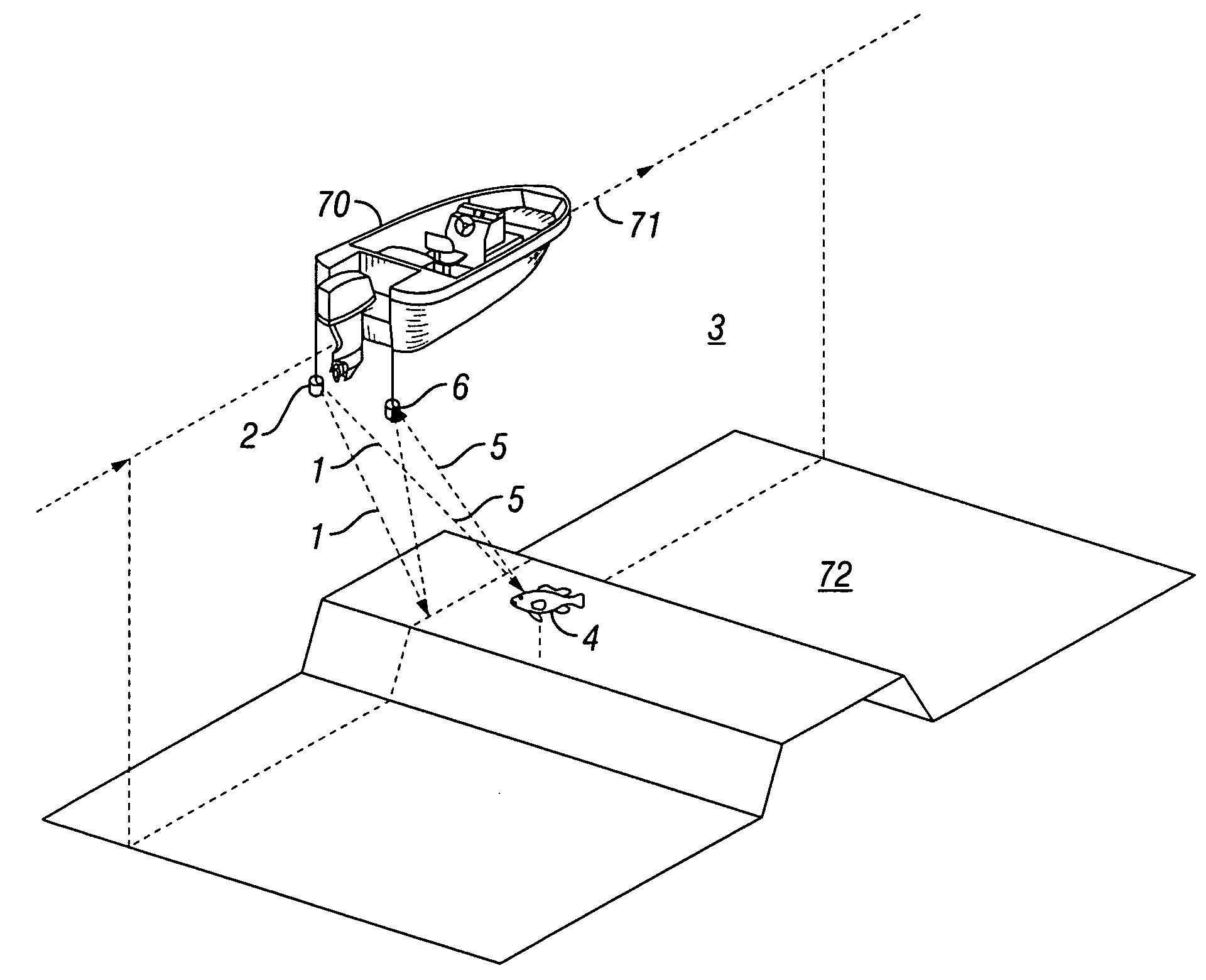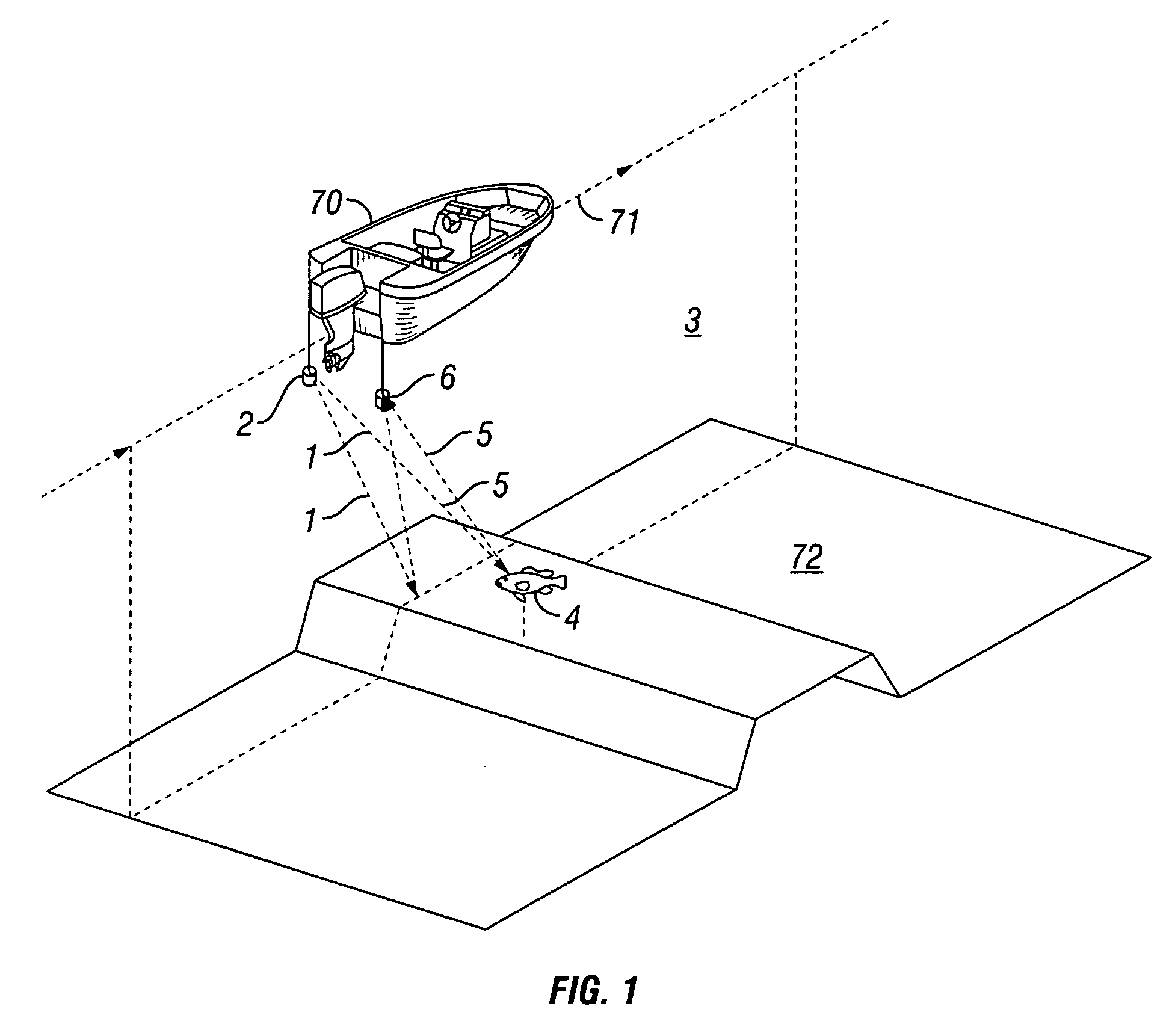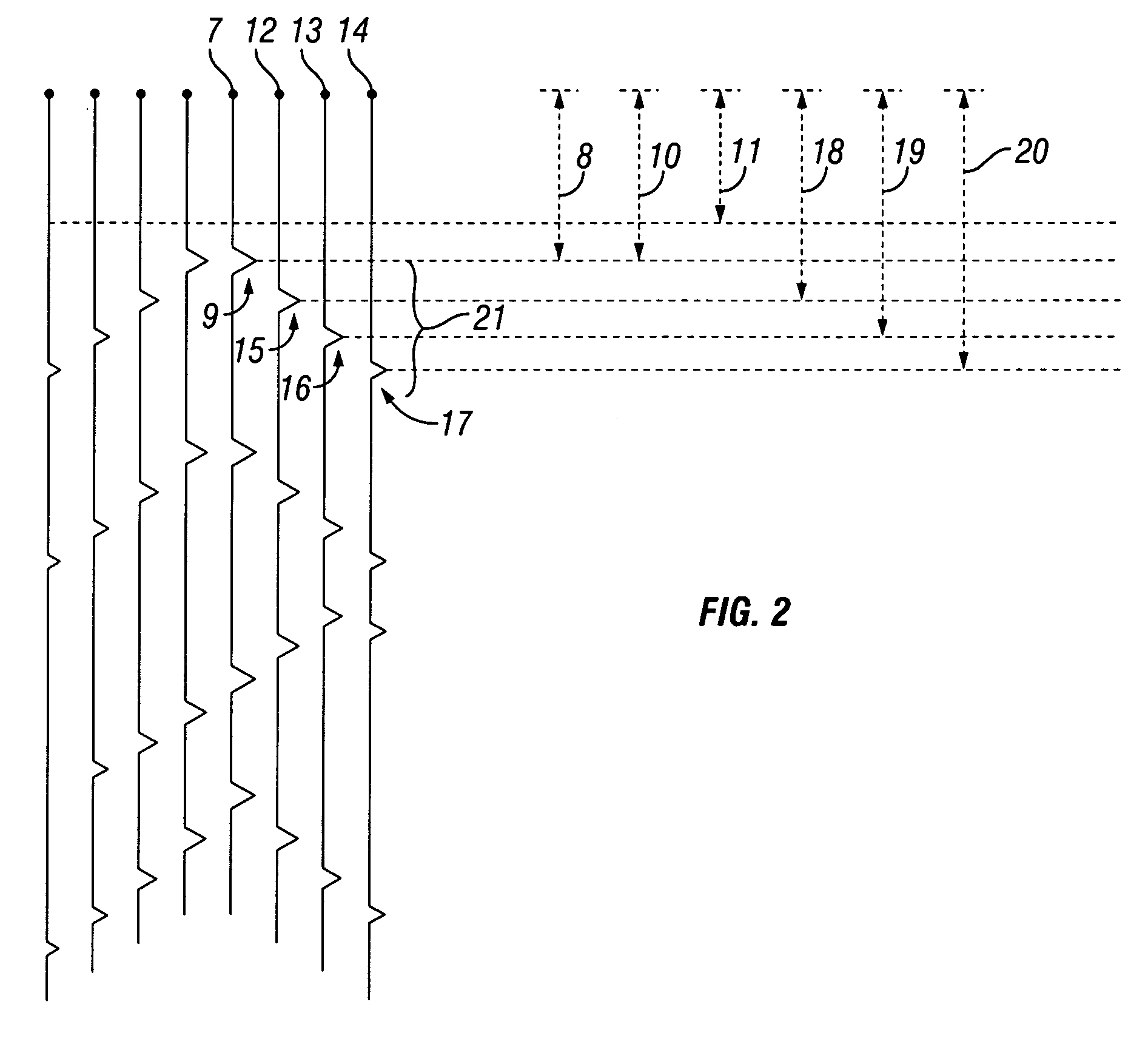Fish Finder
a technology for fish finders and acoustic signals, applied in direction finders, instruments, measurement devices, etc., can solve the problems of limiting the ability of fish finders, reducing the usefulness of fish finders, and affecting so as to improve the signal to noise ratio
- Summary
- Abstract
- Description
- Claims
- Application Information
AI Technical Summary
Benefits of technology
Problems solved by technology
Method used
Image
Examples
Embodiment Construction
[0038]FIG. 1 illustrates a diagrammatic view for ultrasonic acoustic imaging of objects within a body of water. In one example, acoustic signals 1 are produced by an ultrasonic transmitter 2 placed in a body of water 3. Ultrasonic transmitter 2 and ultrasonic receiver 6 are deployed in body of water 3 by a boat 70. Boat 70 travels along a course 71. Acoustic signals 1 reflect off of objects 4 and their reflected echoes 5 are detected by an ultrasonic receiver 6. Fish in water are examples of objects 4 that produce reflected echoes. In one example, transmitter 2 and receiver 6 are located in approximately the same spatial location. In another example, transmitter 2 and receiver 6 are located at differing spatial locations. In another example, there are a multitude of ultrasonic transmitters 2 and ultrasonic receivers 6.
[0039]FIG. 2 illustrates a diagrammatic view of echo soundings and collected echo signals. As shown in FIG. 2, the collection of reflected echoes 5 from a transmitted ...
PUM
 Login to View More
Login to View More Abstract
Description
Claims
Application Information
 Login to View More
Login to View More - R&D
- Intellectual Property
- Life Sciences
- Materials
- Tech Scout
- Unparalleled Data Quality
- Higher Quality Content
- 60% Fewer Hallucinations
Browse by: Latest US Patents, China's latest patents, Technical Efficacy Thesaurus, Application Domain, Technology Topic, Popular Technical Reports.
© 2025 PatSnap. All rights reserved.Legal|Privacy policy|Modern Slavery Act Transparency Statement|Sitemap|About US| Contact US: help@patsnap.com



